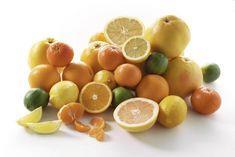
he citrus sector continues to grow, and has seen a 2.9 per cent value and 1.5 per cent volume growth in the last year, according to Kantar Worldpanel, with the market valued at £648 million.
Produce from the southern hemisphere is of good quality, industry insiders report, although the South African lemon crop is somewhat delayed and fruit sizes are smaller than anticipated.
“Generally lemon sizes are smaller across the country, except on the Western Cape,” explains John Edmonds, information manager at the Citrus Growers’ Association of South Africa. “Lemons are also up to one month later than normal. The latest projection done on 6 June indicates that the overall export volume is currently expected to be about one million cartons below that of last year.”
However, the smaller crop has pushed prices up for South African growers. “Lemon prices in all markets are currently good with South Africa’s reduced crop and Argentina having another challenging season,” says Edmonds.
Exporter Marcelo Ortiz, partner at Campo Verde in Argentina’s Tucumán region, confirms the season has been difficult. “The Argentinean lemon export is a bit slow due to the state of the international markets and the economic situation in Europe, but hopefully things will pick up soon, both in terms of prices and volume.”
The Argentineans may struggle, but the picture has been even more complicated in Spain, where the current season is ending. “The cold snaps in February meant we lost a lot of fruit, especially Navelina and Lane Late oranges, and also mandarins,” says Juan Bautista Juan Gimeno, of Cítricos Valencianos.
He cites Ribera Alta in Valencia, which has the largest production of Navelinas, and where the cold caused the most damage to crops. “More than 25,000 hectares have suffered damage to some extent; in many cases the trees will have to be cut down and replaced with new ones, which will obviously affect future crops.”
Value-wise, Spanish growers have suffered considerable losses - prices are down between 25 to 50 per cent compared to last season.
“Prices have fluctuated between nine and 15 cents per kilo, and given that it costs 20 cents per kilo to grow Navelinas and up to 25 cents per kilo for clementines, a whole year’s worth of work has been in vain for growers, who not only have missed out on making a profit but have actually made a significant loss.”
The trend is significantly more positive in the US, where growers made a “modest profit”, according to Mike Yetter at the Florida Department of Citrus. “All in all, the 2011-2012 season ended up being a good season. The quality of Florida grapefruit was good this past season; the brix and juice content were quite high - consumers got a great product.”
Yetter says feedback from UK importers has been positive. “I believe the UK trade was happy with Florida grapefruit. Unfortunately, our crop was smaller this year and the volume we shipped to the UK was not as great as last season; around 10 per cent lower. Our season ended earlier than normal this year because of the early bloom we had last spring.”
As for the value growth in the UK citrus market, industry figures say it is all due to price hikes. “It’s simply price inflation making that value growth figure. The broader trend in fresh produce for some time has been that value growth is outstripping volume growth,” says Chris Butler, commercial director of citrus at MMG Citrus. He thinks retailers will respond by driving volume harder. “We’re seeing bigger packs and better value along with good value multibuys. These are good given the continuing consumer pinch, where retailers providing that value for money is key.”
In terms of UK price levels, Butler says demand is slightly higher than normal at this time of year. “When - or if - the sun comes out, citrus demand will very likely drop off in favour of berries.”
SWEET TIMES FOR GRAPEFRUIT
A campaign designed to change consumers’ perception of grapefruit caused sales of the citrus variety to surge. Lisa Kjellsson finds out how it was done
Sampling activity in food stores across the country has helped get consumers excited about grapefruit, which has been in danger of slipping off the radar from some time.
Participating supermarket chains, including Sainsbury’s, Tesco, Morrisons and Asda, offered shoppers the opportunity to sample Florida grapefruit while learning how to use the fruit in a variety of ways with recipes created by brand ambassador and 2010 Celebrity Masterchef winner Lisa Faulkner.
“The main objectives of the campaign were to challenge consumer misconceptions about grapefruit, which is sometimes perceived as bitter-tasting or difficult to eat,” explains Nancy Brown, international marketing manager at the Florida Department of Citrus. “The campaign aimed to encourage consumers to use grapefruit in recipes and reinforce the message that Florida grapefruit is the sweetest and juiciest variety of grapefruit.”
Sampling activity took place in a total of 279 stores across the UK and proved extremely popular with consumers, with a number of chains seeing a significant increase in sales of the product during the campaign. Some Asda stores even reported more than a 500 per cent sales increase, according to Brown.
“Customers in all supermarkets commented on how sweet the fruit was this year with three quarters of Sainsbury’s customers saying they would be willing to buy the product after trying it.”
A UK-focused Facebook fan page was also launched featuring recipes from Faulkner, information on Florida grapefruit and a competition to win a cookery day with the chef. -



